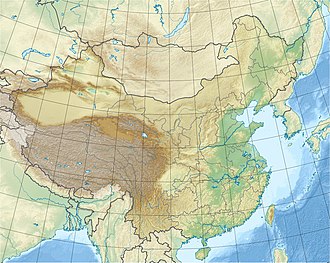 | |
| UTC time | 2001-11-14 09:26:10 |
|---|---|
| ISC event | 2331800 |
| USGS-ANSS | ComCat |
| Local date | 14 November 2001 |
| Local time | 17:26 |
| Magnitude | 7.8 Mw 8.1 Ms [1] |
| Depth | 15 km (9.3 mi) |
| Epicenter | 36°12′N90°54′E / 36.200°N 90.900°E |
| Fault | Kunlun Fault |
| Type | Strike-slip, Supershear earthquake |
| Areas affected | China |
| Max. intensity | MMI X (Extreme) [2] |
| Casualties | none |
An earthquake occurred in China on 14 November 2001 at 09:26 UTC (17:26 local time), with an epicenter near Kokoxili, close to the border between Qinghai and Xinjiang in a remote mountainous region. With a magnitude of 7.8 Mw (8.1 Ms ), it was the most powerful earthquake in China in 5 decades. [3] No casualties were reported, presumably due to the very low population density and the lack of high-rise buildings. This earthquake was associated with the longest surface rupture ever recorded on land at the time, ~450 km. [4]



